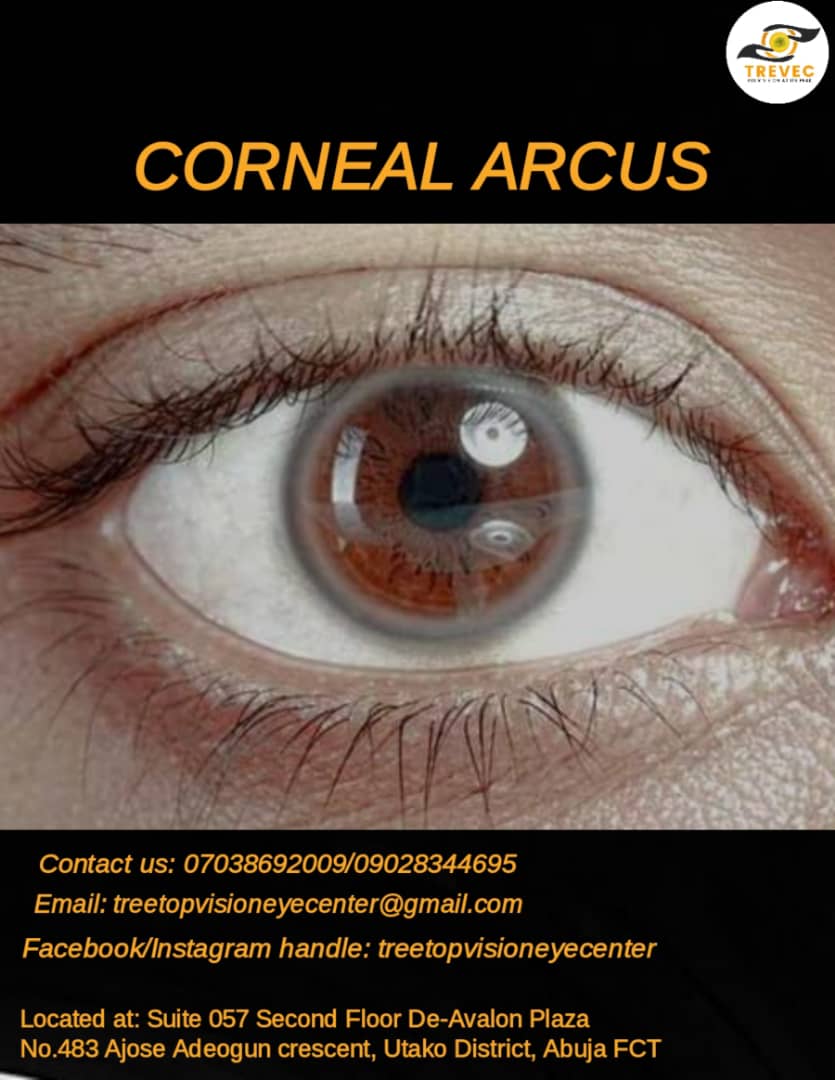PART THREE
One question inquired by the man in our initial post was what may have caused his arcus juveniles. Several risk factors may contribute to the development of this condition, and they include a family history of high cholesterol levels, smoking, and not maintaining a healthy weight and diet. Brings us to the question, “What causes corneal arcus”?
WHAT CAUSES CORNEAL ARCUS?
This condition occurs when lipids (mainly cholesterol) are deposited around the iris in the cornea, although people with high cholesterol levels are more prone to this condition. If the corneal arcus is only present in one eye it may be associated with carotid vascular disease.
In contrast, arcus senilis is not necessarily associated with high cholesterol levels but is a normal aging process.
ARE THEY SIGNS AND SYMPTOMS ASSOCIATED WITH CORNEAL ARCUS?
Typically, the corneal arcus begins as an arc and may grow into a ring. The arc or ring is usually white or grey and may be present in one or both eyes. Aside from the whitish-grey rings, individuals experience no other symptoms (asymptomatic).
CAN CORNEAL ARCUS BE TREATED?
Arcus senilis is age-related and doesn’t necessitate a problem or affect vision thus, treatment is not required. Arcus juveniles must be investigated to determine the cause, be it a lipid metabolism disorder or other underlying conditions.
SUMMARY
Apart from the whitish-grey rings visible in the eye, the corneal arcus is usually asymptomatic. It is vital to contact an Optometrist for any changes in the eyes. Visit us at TREETOP VISION EYE CENTER (TREVEC), the best healthcare provider in eye care located at Utako Abuja. Contact us today to schedule an appointment. Ignorance is no longer an excuse.
We Have come to the end of this topic. Next week and the week after, posts on the blog will be twice (Wednesdays and Fridays) instead of the usual Mondays, Wednesdays, and Fridays because of the festivities until we come your way next week with yet another exciting topic goodbye.
MERRY CHRISTMAS AND HAPPY NEW YEAR IN ADVANCE.
TREVEC CARES!!!



It’s always a pleasure reading through these beautiful and informative lines of yours. Thank you for sharing.
Thank you so much for the information. Now I get different between the Arcus juveniles and Arcus seniles. Compliments of the season!
Also with this information one can tell between heterochromia Iridum/iridis and corneal arcus.
We are glad you find our posts informative, please stay tuned for more. compliments of the season
you’re welcome always
Thank you for your comment ma, please share this post with others
Thank you all for your responses.
It is our great pleasure to ensure the public is well informed and educated about their eye health